A lot of us have been dreaming of plunging into the Balearic Islands’ glittering seas over the last year, and with a bit of luck the fantasy may become a reality before too long.
Floating in the Mediterranean isn’t the only thing on our Balearic wishlist though. We are thinking of staying in small hotels in inland villages, eating in restaurants that use the produce found in the surrounding countryside, and drinking wines from local vineyards. Of course, we still want to lie on the beach, but we might also want to explore by bike, paddle around the coast in a kayak or reboot on a yoga retreat.
You can do all this and a lot more in the Balearics, whether you choose Mallorca, Menorca, Ibiza or Formentera. All the islands are equally if not more enjoyable outside the peak summer months, so think about a walking or cycling holiday in Menorca or Formentera in the autumn, a shopping trip to Palma in Mallorca before Christmas, or a fitness break in Ibiza next spring. You can go back to the Balearics again and again and always have a fresh experience.
Mallorca
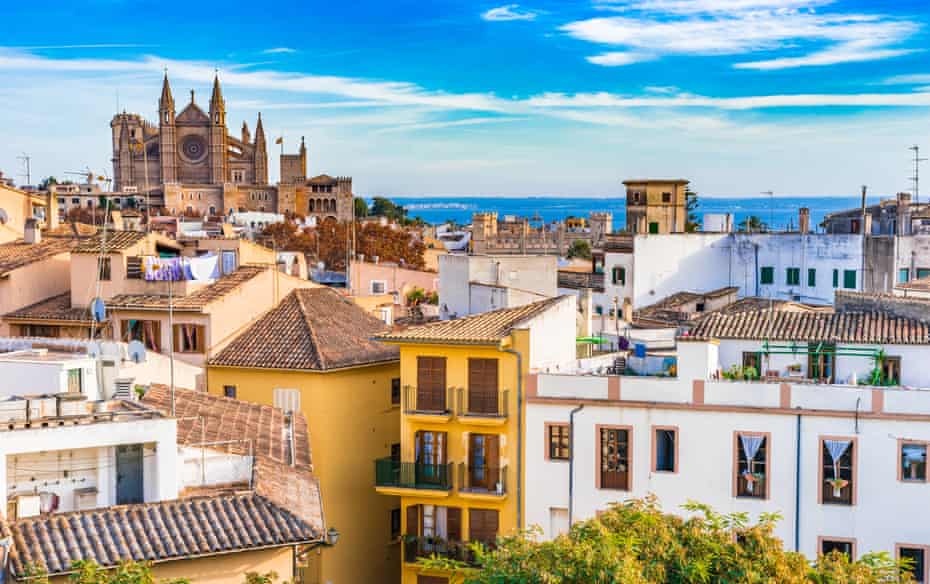
While you can’t really fault Mallorca when it comes to beach resorts, the largest island in the Balearics is increasingly attractive for active holidays, both in and out of the water. The food and wine scene is really exciting too, with local chefs reviving and recreating traditional recipes. Quite a few have their restaurants in the boutique and rural hotels that have sprung up all over the island, making gastronomic breaks a good idea all year round.
What to do
Start with La Seu, Palma’s cathedral by the sea, where Miquel Barceló’s contemporary chapel adds to the magnificence of the gothic architecture. Wander around the former Arab and Jewish quarters, then look up at the elegant art nouveau buildings as you mooch around the shops. Drive up to Valldemossa to see the Cathusian monastery and cruise along the spectacular coast road to Deià, where Robert Graves spent half his life. Visiting the great poet and writer’s house is a magical, intimate experience. Afterwards, walk down to the tiny beach, as Graves used to do, for a delicious dip, before continuing to Sóller for an ice-cream.
Where to stay
Agro Roqueta (apartments from €95, room only, minimum stay four nights), in the village of María de la Salut in the centre of Mallorca, is a family-friendly agroturismo with self-catering accommodation on a farm that dates back to the 13th century and produces its own olive oil. At Ecocirer (doubles from €170 B&B), a stylish guesthouse in Sóller, activities include yoga, picking oranges and making bread. Just outside the pretty town of Artà in the east of the island, Finca S’Estelrica (doubles from €163 B&B) is a rural yet smart hotel with minimalist design near the Llevant nature reserve and unspoilt beaches.
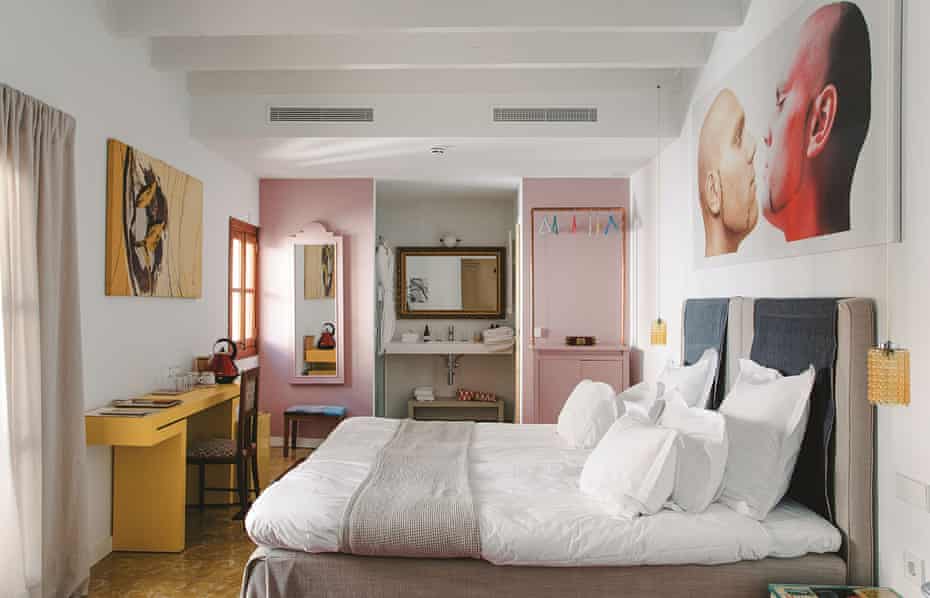
Where to eat
Michelin-starred British chef Marc Fosh uses the best Balearic produce to create sublime dishes at his Palma restaurant, where the set lunch is a real bargain. Also in the capital, El Camino is a gastrobar run by Eddie and Samuel Hart, the brothers behind the Barrafina bars in London, with a changing menu of Mallorcan tapas and wines. At Ca Na Toneta in the inland village of Caimari, it is two sisters in charge, Maria and Teresa Solivellas, who use organic vegetables from their own garden.
Best beaches
With shallow water making it safe for children to paddle, Cala Llombards on the south-east coast near Santanyí is a triangle of pale sand with boat sheds perched on the rocks. If you stay in or around the pretty town of Artà in the east, you can drive to a string of idyllic beaches such as Cala Torta, or the little resort of Canyamel if you want places to eat too. Sheltered by pine trees on the Victòria headland in the north-east of the island, tiny S’Illot is a rocky cove where you can have a paella at the restaurant overlooking the beach. On the south coast, bordering the Ses Salines wetlands, the famous Es Trenc has more than 2km of white sand, where the quieter stretches are popular with naturists.
Ibiza
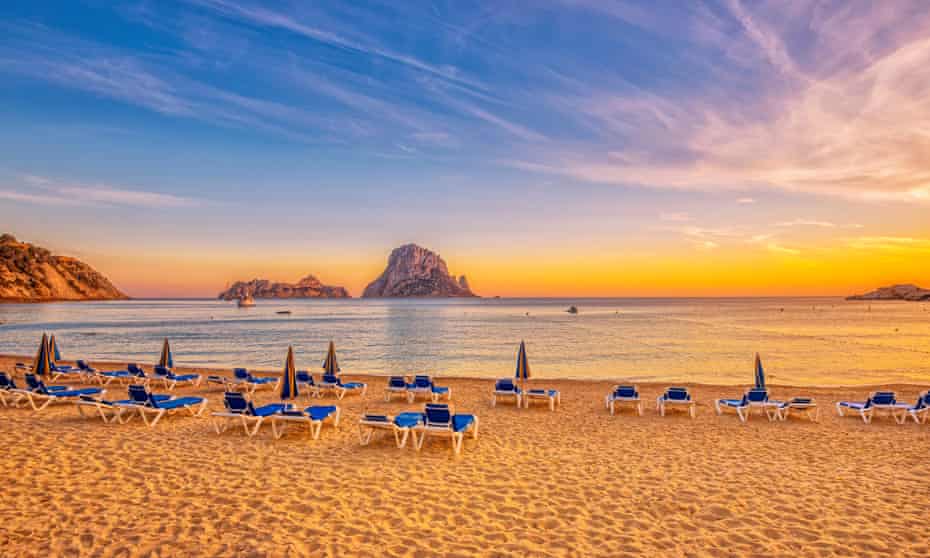
Ibiza has cleverly reinvented itself as a destination for all things healthy while hanging on tight to its nightlife crown. One minute you’re slurping your carrot and ginger juice, the next you’re on your third mojito. The island is increasingly popular for family holidays too – particularly multigenerational ones where the parents are doing yoga at dawn as gran and grandad are rolling back from a club.
What to do
In Eivissa, or Ibiza town, walk through the lanes of the Dalt Vila to get a feel of the island’s history – the whole neighbourhood has Unesco World Heritage status. Pop into the MACE contemporary art museum, which you may well have to yourself, and learn about Ibiza’s local produce and specialities on a food tour. Outside the clubbing season, which in normal times runs from May to October, the island is remarkably quiet and the weather is better for active breaks in the pine-scented air. Every evening, head to the west of the island to watch the sun go down, which should be experienced at least once swigging an overpriced beer in San Antonio, before you find your own favourite spot.
Where to stay
On a hillside above the sea in Cap Negret, near San Antonio, Hostal La Torre (doubles from €92 B&B) has simple rooms and a terrace you could stay on from breakfast to late-night cocktails. In the north of the island near the village of Sant Miquel de Balansat, the family-run Vinya d’en Palerm agroturismo (doubles from €160 B&B) is somewhere you can switch off but still be an easy drive from the action and beaches. In Ibiza town, Ryans La Marina (doubles from €72, room only) is a handy, basic base overlooking the harbour.
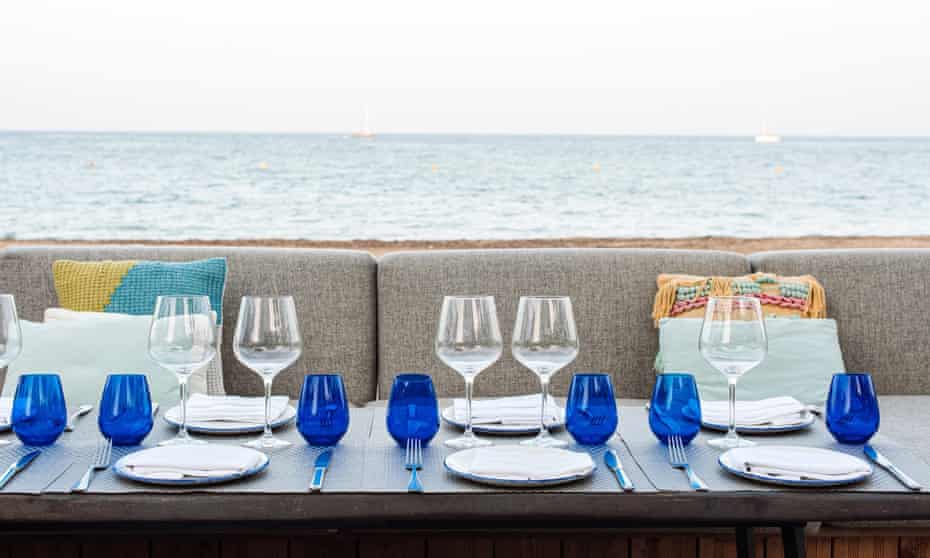
Where to eat
In the romantic garden at La Paloma, in the inland village of San Lorenzo, you eat a mix of Italian and Ibizan food, much of it organic that they grow themselves. Paella on the beach is a must in Ibiza and it is superb at Es Torrent on a tiny beach on the south coast – ask for a sunbed as well when you book a table and make an afternoon of it. Right on the sand in the town of Santa Eulalia in the east, Chiringuito Blue serves healthy Mediterranean cuisine, including vegan dishes, and has a kids’ menu and a supervised play area.
Best beaches
The twisting drive down the hill to Cala d’Hort in the west is worth it for the pale sand, view of magical Es Vedrà island and the choice of restaurants for long lunches. If the fashionable Cala Conta is too crowded, just carry on down the coast and stop wherever takes your fancy – maybe Cala Codolar, a tiny, pebbly cove sheltered by cliffs where the cobalt sea is like a pool. On the other side of the island, swimsuits are optional at Aguas Blancas, which has a wilder feel.
Menorca
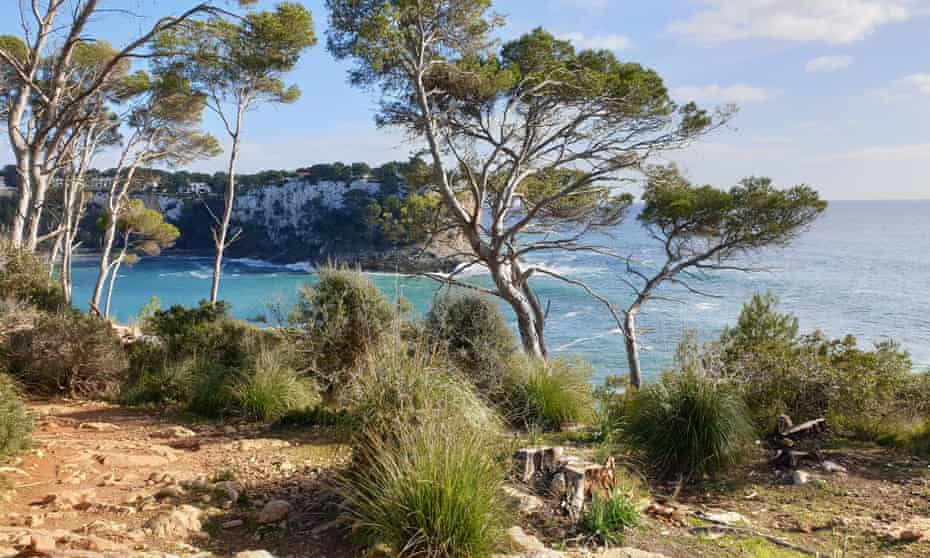
Protecting the environment and keeping tourism at sustainable levels have always been important in Menorca, which has been a Unesco Biosphere Reserve for nearly three decades. While it only measures around 30 miles from west to east, the island has more than 125 miles of coastline, punctuated by dozens of pristine beaches and circumnavigated by the Camí de Cavalls trail.
What to do
Tackling a stretch of the Camí de Cavalls, a bridle path dating back 700 years, is a good way to get an idea of the natural beauty of Menorca, whether you are into birdwatching, butterflies or wildflowers (there are about 30 varieties of orchids for a start), or just want to swim in coves that are inaccessible by car. You can walk, cycle or ride a horse and take it as slow as you like – the slower the better really. Whatever you are doing in Menorca, the word “slow” comes up a lot. The coastal waters are ideal for diving and the beaches great for paddleboarding or simply paddling. Along the way are the Talayotic burial chambers and temples, which date back to at least 2,000BC. For contemporary art, Hauser & Wirth is opening a new gallery in July in part of an 18th-century naval hospital on the Isla del Rey in the port of Mahón. Both Mahón and Ciutadella, on the other side of the island, have plenty of outdoor tables for long, cool drinks – try the local gin.
Where to stay
Surrounded by its own vineyards but close to beaches and the airport, Torralbenc (doubles from €182 B&B) sums up the stylish simplicity of Menorca and has an excellent restaurant. In the centre of Mahón, the chic new Cristine Bedfor Guest House (doubles from €188 B&B) has the unmistakable stamp of top designer Lorenzo.
At Son Vives (doubles from €120 B&B), a restored farmhouse in the centre of the island, they make their own cheese and have an organic vegetable garden. The family-run – and family-friendly – Agroturisme Biniatram (doubles from €95 B&B, and apartments from €105) is near Cala Morell beach in the north-west corner of the island.
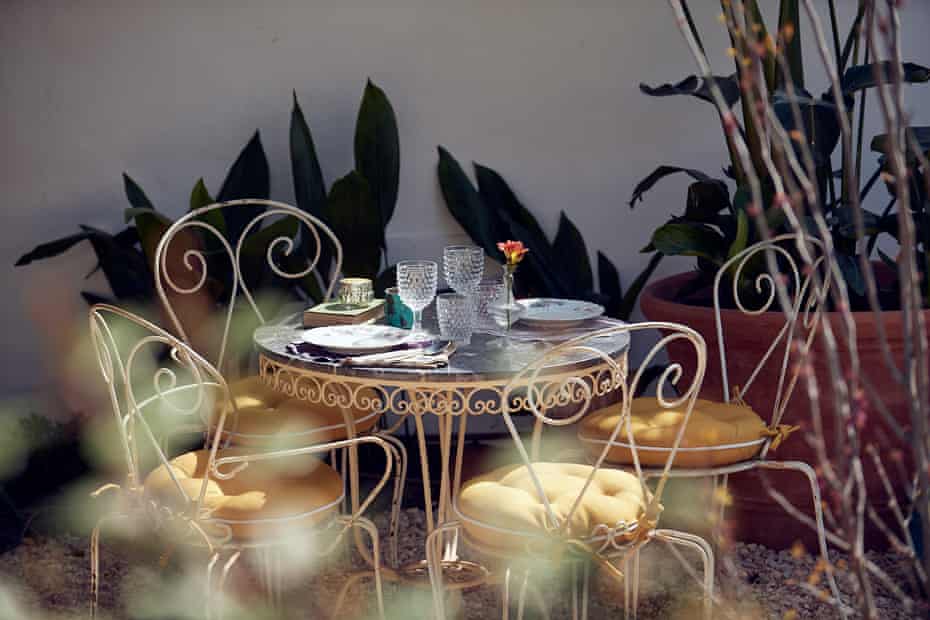
Where to eat
At Es Tast de na Silvia in Ciutadella, Silvia Anglada showcases the best local produce and is a pioneer of Menorca’s slow food movement. Overlooking the sea in Cala Torret in San Lluis, the Salitre and CalaMar restaurants are run by Zoltan Polgar, who was previously executive chef at José Pizarro’s restaurants in London. At both places, expect fish straight from the sea and plenty of plant-based dishes using organic vegetables. Caldereta de Langosta – lobster cooked in a rich stock – is a terrific special occasion dish. Try it at Café Balear in Ciutadella or Es Cranc in Fornells.
Best beaches
Indigo, emerald, cornflower, cyan … you could spend a lot of time musing on the shades of the sea in Menorca. The gorgeous Macarella and Macarelleta coves on the south coast do a lot of the heavy lifting to promote the island’s beaches, and justifiably so, but there are dozens more of staggering beauty. At Caló Blanc, near Binibeca, you jump off the rocks into the clear water. For a long, sandy stretch, there’s Son Saura, or head to the quieter north coast for Pregonda, with reddish-gold sand and pink rocks.
Formentera
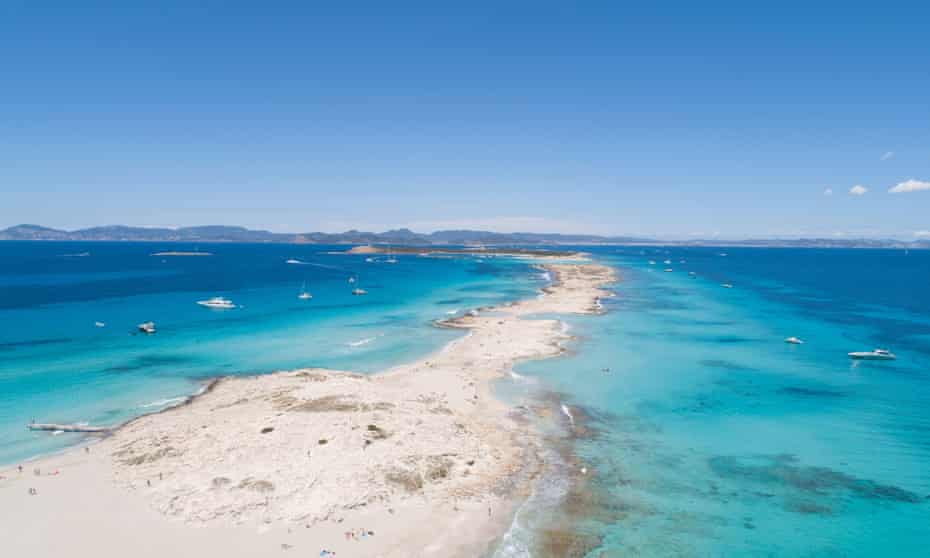
With blissful beaches and a bohemian vibe, Formentera is a natural paradise where more than 70% of the land is protected. There is no airport, so you fly to Ibiza and sail over on the ferry to La Savina, a half-hour voyage that chucks your stress overboard before you even step on to the island.
What to do
The smallest of the Balearics, Formentera is only 11 miles long but has 43 miles of coastline. Although most of the island never feels crowded, the 12,000 population quadruples in July and August. To maintain a sustainable environment, the number of cars is limited and the use of electric vehicles is being encouraged. Better though to hire a bike to trundle along the mostly flat tracks, shaded by almond, juniper and pine trees, to reach secret coves for a beer or two at a feet-in-the-sand bar. Just take your pick from the 32 green routes that score the landscape. To understand why the beaches are so pristine, you have to immerse yourself in the transparent water to discover the rich marine life below the surface – excellent visibility means you see a lot just with a mask and snorkel so you don’t need to be able to dive. A posidonia seagrass meadow sprawls between Formentera and Ibiza, which filters the water, absorbs carbon and creates oxygen. Octopus, scorpion fish, lobsters and moray eels are just a few of the species you are likely to see.
Where to stay
Casa Pacha Formentera (doubles from €240 B&B) offers a luxe version of the pared-back look that characterises accommodation on Formentera and is right on Migjorn beach with a restaurant that will no doubt be the place to be seen this summer. Hostal Aigua Clara (doubles from €131, room only), also on Migjorn beach, has yoga classes on the sand and a great restaurant. Regular visitors love the laid-back, beachfront vibe at the Talaya apartments (studios from €160). No frills required? Doubles at Hostal Rafalet, right by the sea in Es Caló from €70, room only.
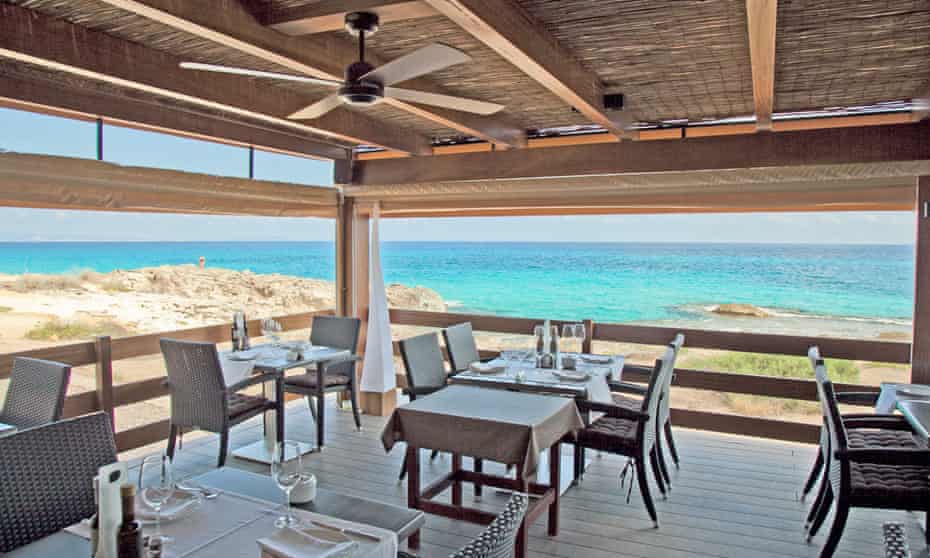
Where to eat
Lobster fried with eggs, peppers and potatoes? How good would that be after a morning cycling and snorkelling? Try it on the waterside terrace at Es Caló). Can Forn (Carrer Major 39; 0034 971 3281555) in Sant Ferran specialises in the traditional dishes of Formentera, such as ensalada pagesa, a chunky salad with the dried fish you see hanging up around the island, and squid cooked with sobrasada sausage.
Best beaches
The glistening sands are soft and white and boardwalks lconnect the beaches. Some have bar shacks, others fancy restaurants, most have nothing at all. Illetas beach is close to the ferry port and so splendid that a lot of people venture no further, but it is an easy stroll to the quieter Levante. On the other side of the island, Migjorn stretches for more than three miles, down to the tiny Caló des Mort cove. Families love Cala Saona, where the sea is particularly calm.





